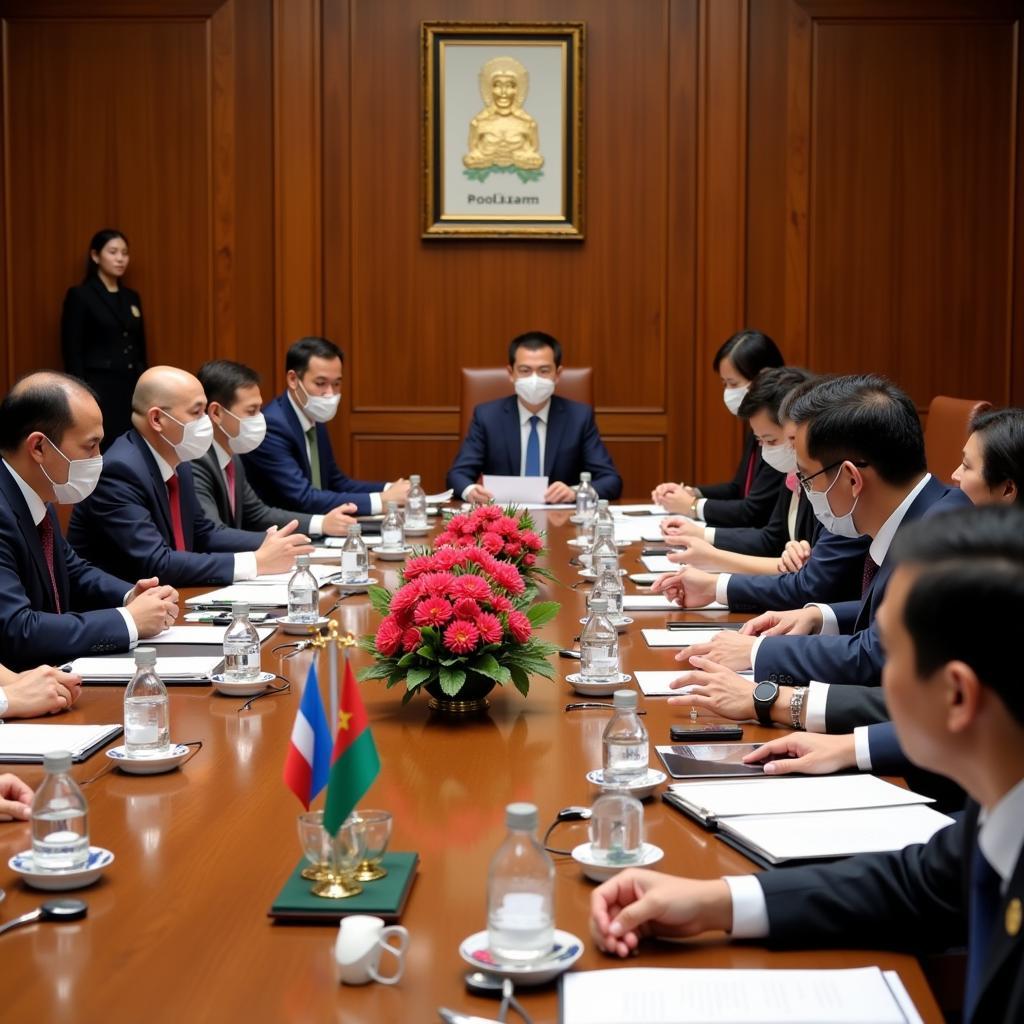The Asia-Pacific Economic Cooperation (APEC) and the Association of Southeast Asian Nations (ASEAN) are two prominent regional organizations playing a crucial role in fostering economic cooperation and integration in the Asia-Pacific region. While APEC is a broader forum encompassing 21 member economies, ASEAN comprises ten Southeast Asian nations. The intertwined relationship between APEC and ASEAN has fostered economic growth, strengthened regional integration, and promoted cooperation across diverse sectors.
The Interplay of APEC and ASEAN: A Shared Vision
Both APEC and ASEAN share a common vision of promoting free trade, investment, and sustainable development in the Asia-Pacific region. They recognize the significance of economic growth and regional integration as key drivers of prosperity. APEC, with its broader membership, provides a platform for economies to address global challenges and enhance trade liberalization. ASEAN, with its focused regional approach, facilitates deeper integration among member states, promoting cooperation in various sectors, including trade, investment, and tourism.
APEC as a Catalyst for ASEAN’s Growth
APEC’s initiatives and policies have significantly influenced ASEAN’s economic development and integration. For instance, APEC’s Free Trade Area of the Asia-Pacific (FTAAP) vision has spurred ASEAN’s efforts to create a regional economic community. Moreover, APEC’s emphasis on innovation and digital economy has inspired ASEAN to adopt similar strategies, fostering digital transformation and technological advancements within the region.
ASEAN’s Contribution to APEC’s Goals
ASEAN’s proactive engagement within APEC has played a vital role in advancing APEC’s goals. ASEAN’s experience in regional integration and economic cooperation has provided valuable insights and lessons learned for APEC. Furthermore, ASEAN’s strong regional voice has contributed to shaping APEC’s agenda and priorities, ensuring that regional interests are effectively represented in the wider Asia-Pacific context.
“The synergy between APEC and ASEAN creates a powerful force for regional economic integration, fostering trade, investment, and sustainable development in the Asia-Pacific region,” says Dr. John Lee, an expert on regional economics and integration.
Key Areas of Collaboration: Fostering Synergistic Growth
APEC and ASEAN have collaborated in key areas to drive economic growth and integration. These areas include:
- Trade and Investment: APEC’s initiatives to reduce trade barriers and promote investment have significantly benefited ASEAN member states. ASEAN’s participation in APEC’s Free Trade Agreement (FTA) negotiations has led to enhanced market access and economic opportunities for its member countries.
- Infrastructure Development: Both organizations recognize the crucial role of infrastructure development in fostering economic growth and connectivity. Through joint initiatives and collaborative projects, they are investing in transportation, energy, and telecommunications infrastructure, strengthening regional integration.
- Sustainable Development: APEC and ASEAN are actively working towards sustainable development goals, promoting green growth, environmental protection, and climate change mitigation. Collaborative initiatives in these areas aim to achieve inclusive and sustainable development, ensuring a brighter future for the region.
Case Study: The APEC Business Advisory Council (ABAC)
The ABAC is a prominent example of APEC-ASEAN collaboration. ABAC’s role is to provide advice to APEC leaders on business issues and to promote private sector participation in regional economic integration. ASEAN members actively participate in ABAC, providing valuable insights and shaping its recommendations, ensuring that the business perspective of the region is effectively represented.
The Future of APEC-ASEAN Cooperation
The future of APEC-ASEAN cooperation looks promising. With the increasing interconnectedness of the Asia-Pacific region, the importance of these two organizations in fostering economic growth and regional integration is becoming even more evident. By leveraging their combined expertise, resources, and influence, APEC and ASEAN can effectively address emerging challenges and seize opportunities for continued economic prosperity and development.
FAQ:
Q: What are the main differences between APEC and ASEAN?
A: APEC is a broader forum encompassing 21 member economies across the Asia-Pacific region, while ASEAN is a regional bloc focusing on ten Southeast Asian countries.
Q: What are some examples of successful APEC-ASEAN collaborative projects?
A: Notable examples include joint initiatives in infrastructure development, sustainable development, and the promotion of trade and investment.
Q: How does ASEAN’s participation in ABAC benefit the region?
A: ASEAN’s participation provides a platform for businesses in the region to contribute their expertise and perspectives to shaping APEC’s policies and initiatives.
Q: What are the challenges facing APEC-ASEAN cooperation in the future?
A: Challenges include maintaining a balanced approach to economic liberalization, ensuring equitable benefits for all member states, and addressing emerging issues such as climate change and digital transformation.
Q: What are the prospects for APEC-ASEAN cooperation in the coming years?
A: The future of APEC-ASEAN cooperation looks promising, with both organizations playing a crucial role in promoting economic growth and integration in the Asia-Pacific region.


